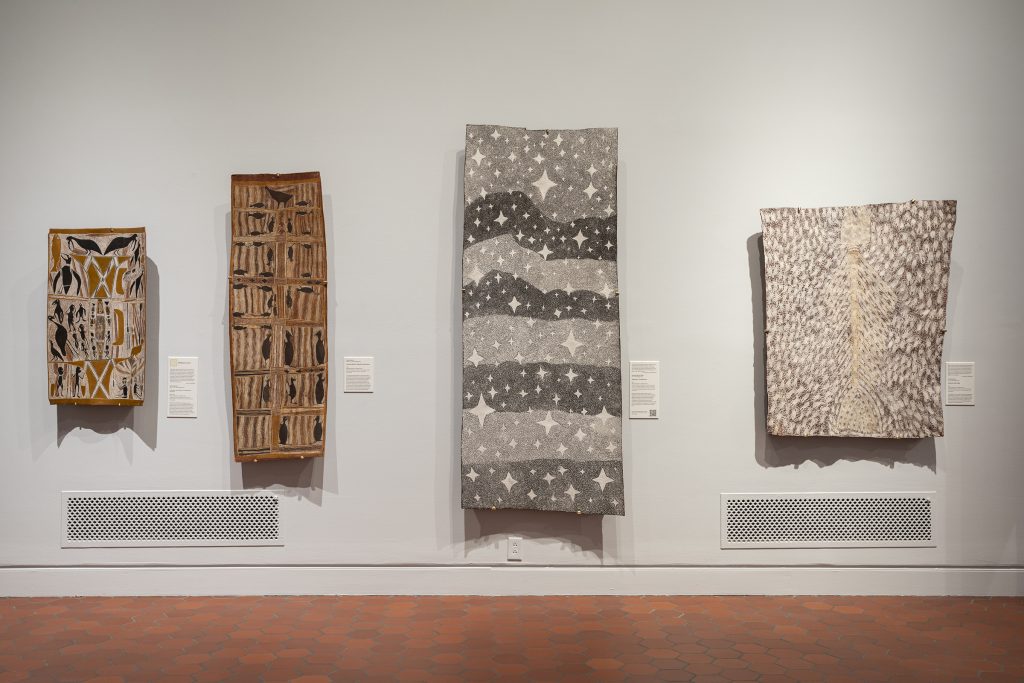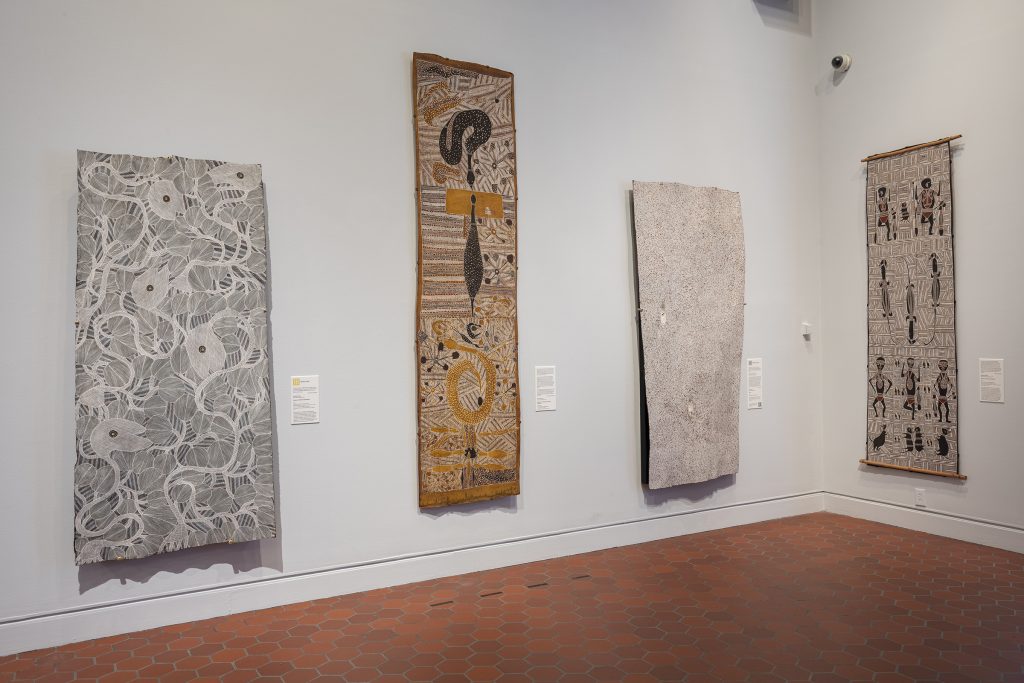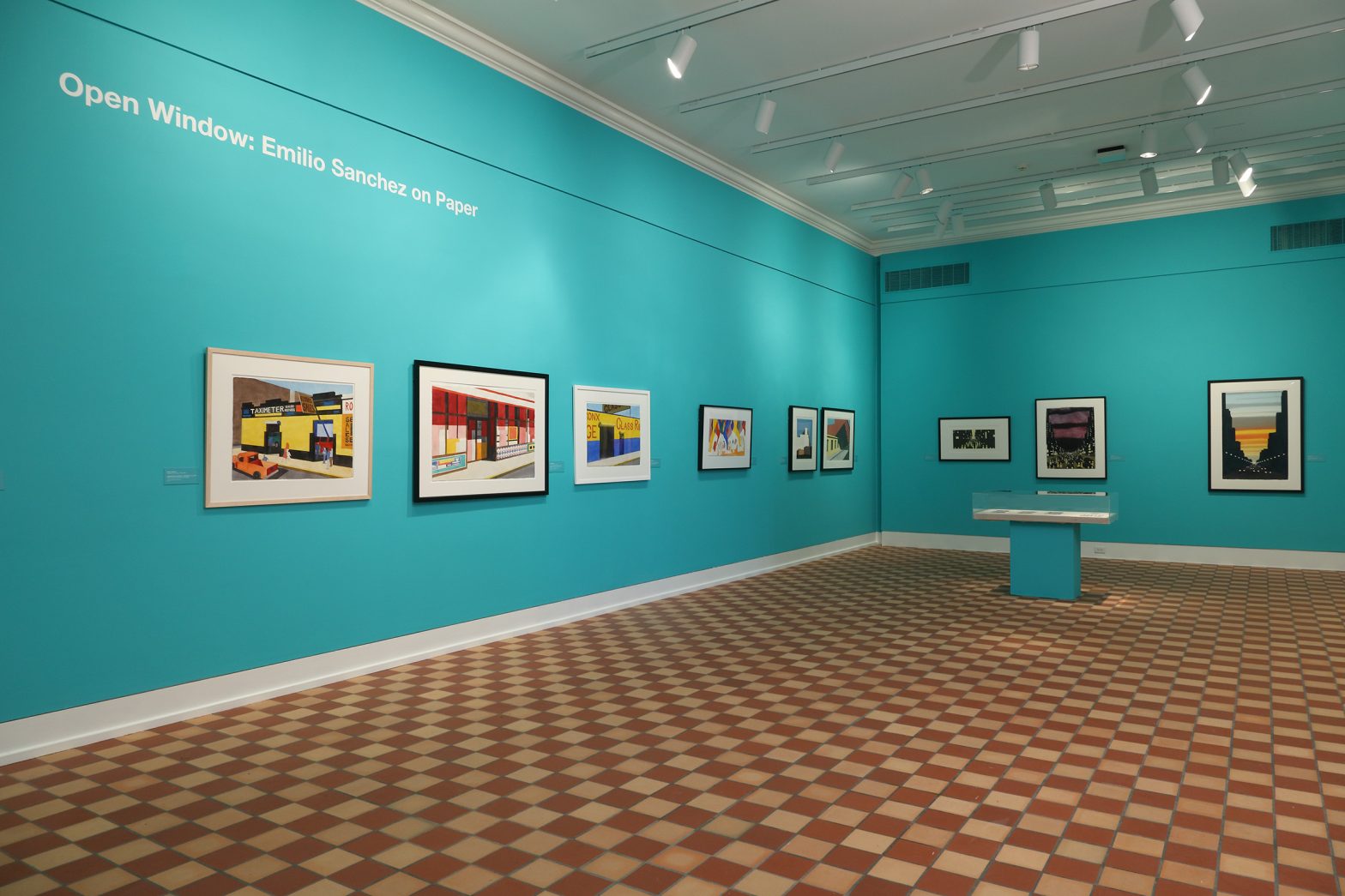“They’re more than art—they’re like the Bible, Google Maps, and ancestry.com all rolled into one,” says Henry Skerritt, curator of the Indigenous Arts of Australia at University of Virginia’s Kluge-Ruhe Aboriginal Art Collection. Skerritt is describing what bark paintings represent to the Yolŋu people of Arnhem Land in the Northern Territory of Australia. It’s an apt description to keep in mind when viewing “Madayin: Eight Decades of Aboriginal Australian Bark Painting from Yirrkala” at The Fralin Museum.
The exhibition, which is the largest showing of bark paintings ever presented in the Western Hemisphere, took seven years to produce—a remarkable endeavor given the scope of the exhibition and the challenges along the way, including a global pandemic and legislative changes governing the export of Australian cultural heritage objects.
“Madayin” is a collaboration with the Hood Museum of Art at Dartmouth College, but it was in Charlottesville, in 2015, that the idea for this exhibition took root. Djambawa Marawili, Chairman of the Buku-Larrŋgay Mulka Centre, was at the Kluge-Ruhe Collection on an Australia Council for the Arts artist residency. Astonished at the number of bark paintings in the collection—many containing stories he recognized—he became intent on producing a show that would tell the history of Yolŋu bark paintings.
Bark painting is a relatively new innovation in an artistic continuum that stretches back at least 50,000 years. But it wasn’t until the 1930s that the Yolŋu began painting their artwork on large expanses of flattened eucalyptus bark. Prior to this, they placed their symbols and figures on the body or ceremonial objects, or they incorporated them into sand-sculptures.

Supplied photo.
Aboriginal artwork is centered on storytelling passed down through generations, and Aboriginal artists cannot paint stories that do not belong to them through their clan. Songlines are walking routes which traverse the country with important stops like water holes and sacred sites denoted along the way and are essential to the storytelling. Each songline is specific to a certain Aboriginal clan and is memorized and sung.
As an opening and closing practice, a song is sung to include the spirit. “Every one of those paintings has an accompanying song and an accompanying dance,” says Skerritt. “It records these epic ancestral stories and also testifies to the type of ownership of those places. ‘This is my mother’s brother’s land, so I can camp here and I can use the natural resources here,’ and the people living there say, ‘Well, okay, sure. Do you know the song or dance that goes with this place?’ And if they don’t know the right song and dance, they don’t have a right to be there.”
Yirrkala and its bark paintings played a central role in establishing Indigenous land rights. When a section of the Arnhem Land Reserve was opened to bauxite mining in 1963, clan elders responded by producing petitions on bark that presented their claim to the land. The petitions featured text in both Gupapuyŋu and English surrounded by sacred clan designs. The effort to stop the mining failed, but the petitions were significant in establishing indigenous ownership in the Northern Territory Land Rights Act of 1976 and the 2008 Sea Rights case.
“Madayin” is curated by the artists themselves and the late Wukun Wanambi, to whom the exhibition and catalog are dedicated. They know how the work relates, its purpose and its meaning, which paintings go together and which must be kept separate, and which should be removed from public view altogether. Designed to be as accessible as possible to the Yolŋu back home, the extensive 348-page catalog is bilingual and the show is online.

Supplied photo.
The Yolŋu people divide everything into either Dhuwa or Yirritja moieties, separate groups that operate collaboratively. Ceremonies always include both Yirritja and Dhuwa, and members of one group can only marry someone from the opposite moiety. These principles, central to how the Yolŋu people live, also guided how they chose to arrange the exhibition.
It was important to the curators to hang old paintings alongside contemporary works to show the continued vitality of the Yolŋu artistic and spiritual traditions. “Whether I see an old painting or a new one, it’s no different,” says Wanambi. “The pathway is the same. The songline. The pattern. The story. The place. The wäŋa (homeland)—the place where it came from. It’s all the same.”
The works feature an earthy palette of red—ranging from dark brick to pink—black, tan, white, and mustard, and distinctive Yolŋu marks like cross-hatching, diamonds, and dots. Viewers can spot animals, plants, and people in the older works, but other references to topography, cosmology, and spirituality are beyond our understanding. The newer pieces read like abstract paintings but are composed of patterns, sometimes made up of recognizable objects like fish, and, in some cases, the designs are placed over figurative imagery, obscuring it.
From the Aboriginal perspective, “Madayin” is far more profound than an art exhibition. The word itself means sacred and sublime, and the Yolŋu, in addition to sharing their ancestral knowledge, are showcasing a different way of seeing and understanding.
The Yolŋu spirit of collaboration extends to their artwork, which represents a relationship between the Yolŋu and the land. You see this in a small way with the pigments they use, which are derived from natural ochre and iron clay, but as Marawili explains, it’s far more profound than that: “The land has everything it needs, but it could not speak. It could not express itself, tell its identity, so it grew a tongue. That is the Yolŋu. That is me. We are the tongue. Grown by the land so it can sing who it is. We exist so we can paint the land. That is our job. Paint and sing and dance so that the land can feel good and express its true identity. Without us, it cannot talk, but it is still there. Only silent.”












